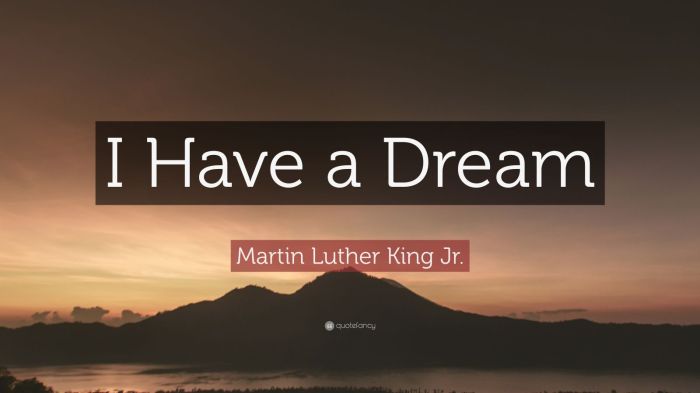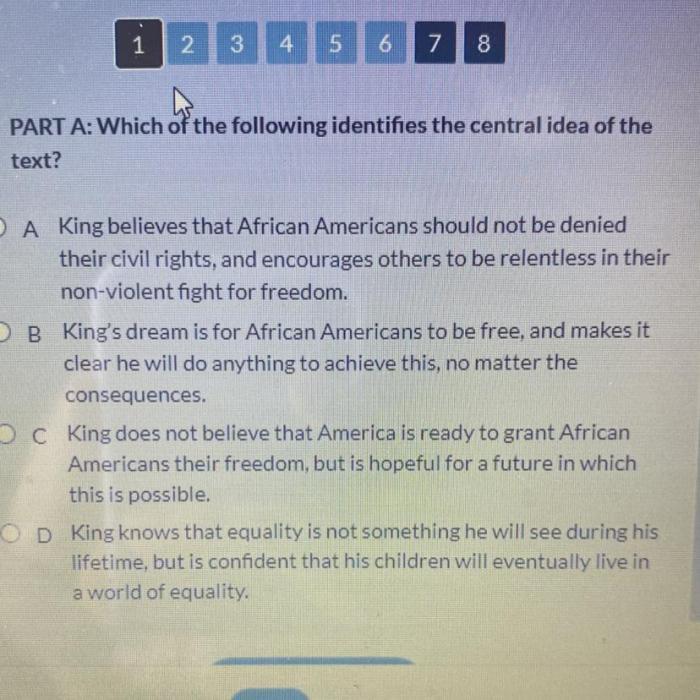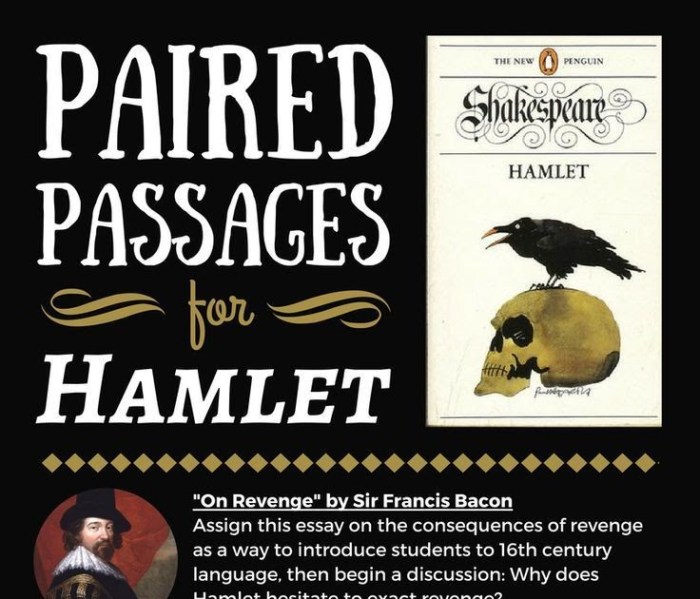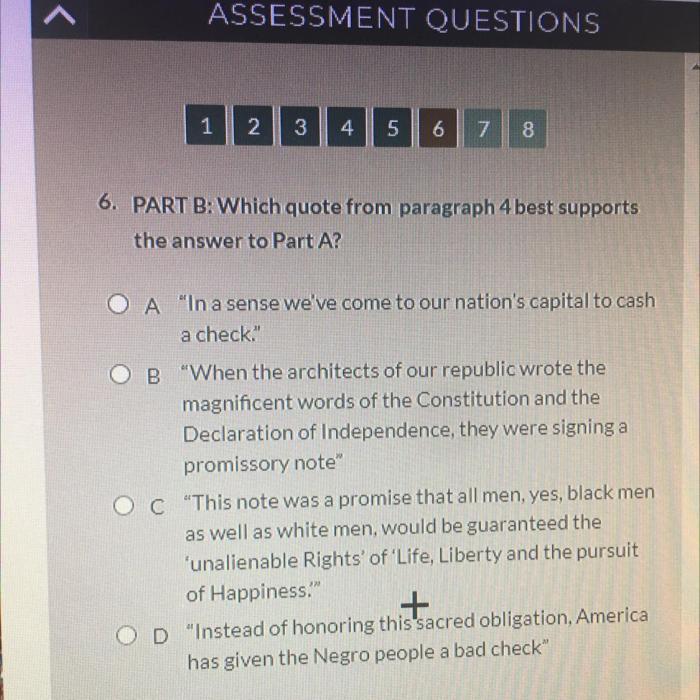CommonLit I Have a Dream, a seminal speech delivered by Martin Luther King Jr., has had a profound impact on American history. Its timeless message of hope, equality, and justice continues to inspire generations.
This comprehensive analysis delves into the historical context, main themes, and rhetorical devices employed in the speech. It explores its impact on the Civil Rights Movement, literary significance, and relevance to contemporary issues.
Martin Luther King Jr.’s “I Have a Dream” Speech

Martin Luther King Jr.’s “I Have a Dream” speech, delivered on the steps of the Lincoln Memorial in Washington, D.C., on August 28, 1963, stands as a defining moment in the American civil rights movement. The speech, a powerful call for racial equality and justice, has since become one of the most iconic and influential speeches in American history.
Historical Context
The “I Have a Dream” speech was delivered during a time of heightened racial tensions in the United States. The civil rights movement was gaining momentum, but racial segregation and discrimination were still widespread. King’s speech was a response to the injustices faced by African Americans and a call for a more just and equitable society.
Main Themes and Arguments
The central theme of the “I Have a Dream” speech is the pursuit of racial equality. King argues that all Americans, regardless of race, should have the same rights and opportunities. He draws on the Declaration of Independence and the Constitution to support his argument, emphasizing the principles of liberty, equality, and justice for all.
Use of Rhetorical Devices
King’s speech is a masterpiece of rhetoric, employing a range of persuasive techniques to captivate his audience and drive his message home. He uses vivid imagery, powerful metaphors, and biblical allusions to create a compelling and emotionally resonant speech.
- Imagery:King’s use of imagery, such as the “promissory note” of the Declaration of Independence and the “check” that has been returned “marked ‘insufficient funds’,” creates a vivid and memorable picture of the injustices faced by African Americans.
- Metaphors:King’s metaphors, such as comparing the civil rights movement to a “mighty stream of justice” and the United States to a “great symphony of brotherhood,” convey complex ideas in a powerful and accessible way.
- Biblical Allusions:King’s use of biblical allusions, such as references to the Exodus and the Sermon on the Mount, connects his message to a deep and familiar tradition, giving it added weight and authority.
Impact and Legacy
The “I Have a Dream” speech had a profound impact on the civil rights movement and American society as a whole. It helped to galvanize support for the movement and contributed to the passage of the Civil Rights Act of 1964 and the Voting Rights Act of 1965. King’s speech continues to inspire people around the world and serves as a reminder of the importance of fighting for justice and equality.
The Impact of “I Have a Dream” on the Civil Rights Movement

Martin Luther King Jr.’s “I Have a Dream” speech was a pivotal moment in the Civil Rights Movement. Its immediate impact was to galvanize the movement and inspire people to continue fighting for equality. The speech also had a long-term impact on civil rights activism, shaping public opinion and policy.
Immediate Impact
The speech’s immediate impact was to energize the Civil Rights Movement. King’s words inspired people to continue fighting for equality, and they helped to build momentum for the movement. The speech also helped to raise awareness of the plight of African Americans, and it put pressure on the government to take action.
Long-Term Influence
The speech’s long-term influence on civil rights activism was profound. King’s words helped to shape public opinion on civil rights, and they inspired a new generation of activists. The speech also helped to lay the foundation for the Civil Rights Act of 1964 and the Voting Rights Act of 1965, two landmark pieces of legislation that helped to end segregation and discrimination in the United States.
Role in Shaping Public Opinion and Policy
The speech played a pivotal role in shaping public opinion on civil rights. King’s words helped to change the way that people thought about race, and they inspired a new understanding of the importance of equality. The speech also helped to put pressure on the government to take action on civil rights, and it ultimately led to the passage of landmark legislation.
CommonLit’s “I Have a Dream” speech is a powerful reminder of the fight for equality. But beyond words, art also plays a vital role in social justice. Check out Ravens Quest Art of Zoo , where art becomes a catalyst for dialogue and change.
As we reflect on the legacy of Dr. King, let’s remember the power of both language and art in shaping our dreams for a better world.
Literary Analysis of “I Have a Dream”

Martin Luther King Jr.’s “I Have a Dream” speech is a masterpiece of American oratory, renowned for its powerful structure, evocative language, and ability to inspire. Its impact on the Civil Rights Movement was profound, galvanizing millions and shaping the course of history.
Structure and Organization, Commonlit i have a dream
The speech is carefully structured, beginning with a compelling hook that establishes the dream of racial equality. King then uses a series of powerful anecdotes to illustrate the injustices faced by African Americans. He builds momentum with a crescendo of rhetorical questions, leading to the iconic “I have a dream” refrain.
Language, Imagery, and Symbolism
King’s language is rich in imagery and symbolism. He uses biblical allusions to connect his message to the broader human struggle for freedom and equality. The recurring “mountaintop” metaphor symbolizes the ultimate goal of racial harmony, while the “promissory note” represents the unfulfilled promises made to African Americans.
Emotional Appeal and Inspiration
The speech’s emotional appeal is undeniable. King’s passionate delivery and use of personal anecdotes create a deep connection with the audience. His call for “justice” and “freedom” resonates with universal human values, inspiring countless individuals to fight for a more just and equitable society.
“I Have a Dream” in Contemporary Society: Commonlit I Have A Dream

Martin Luther King Jr.’s “I Have a Dream” speech remains a beacon of hope and inspiration in contemporary society, as it continues to resonate with the ongoing struggles for racial justice and equality.
Relevance to Contemporary Issues
The speech’s message of unity, equality, and nonviolence remains relevant to contemporary issues of race and discrimination. The dream of a society where individuals are judged by their character rather than their skin color continues to drive the fight against systemic racism and prejudice.
Inspiration and Motivation
The speech’s powerful rhetoric and emotional appeal continue to inspire and motivate activists today. King’s vision of a just and equitable society provides hope and determination for those working towards social change. His words remind us of the importance of perseverance and the transformative power of nonviolent resistance.
Application to Other Social Justice Movements
The principles enshrined in “I Have a Dream” can be applied to a wide range of social justice movements. The speech’s emphasis on equality, dignity, and human rights serves as a guiding light for those fighting for LGBTQ+ rights, economic justice, and environmental protection.
Query Resolution
What is the significance of CommonLit I Have a Dream?
It is a powerful speech that played a pivotal role in the Civil Rights Movement, advocating for equality and justice.
What are the main themes of the speech?
The speech emphasizes the importance of unity, equality, and the pursuit of the American Dream for all.
How did the speech impact the Civil Rights Movement?
It galvanized the movement, inspired activists, and helped shape public opinion in favor of civil rights.